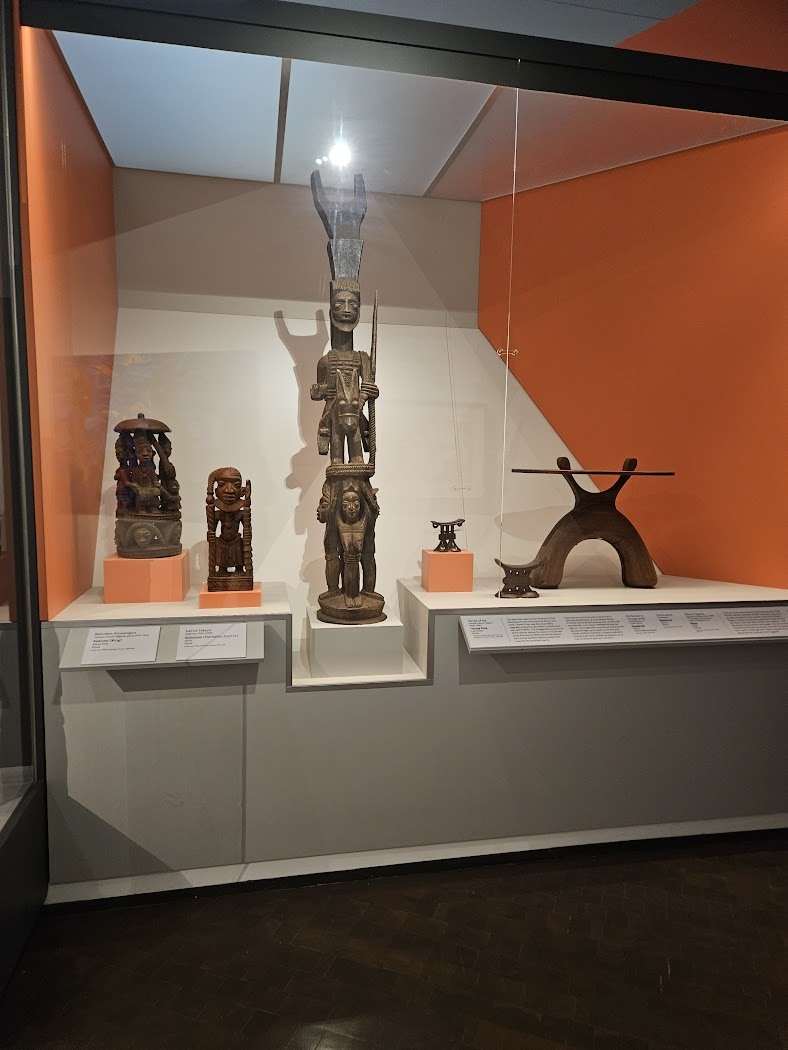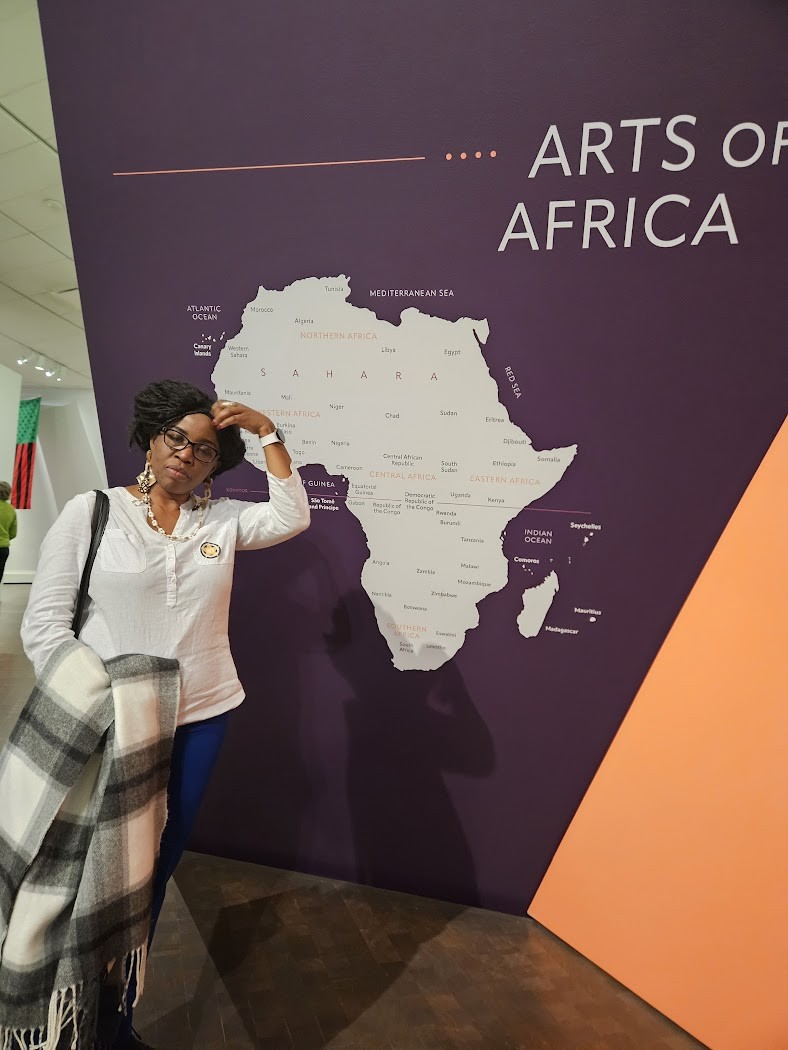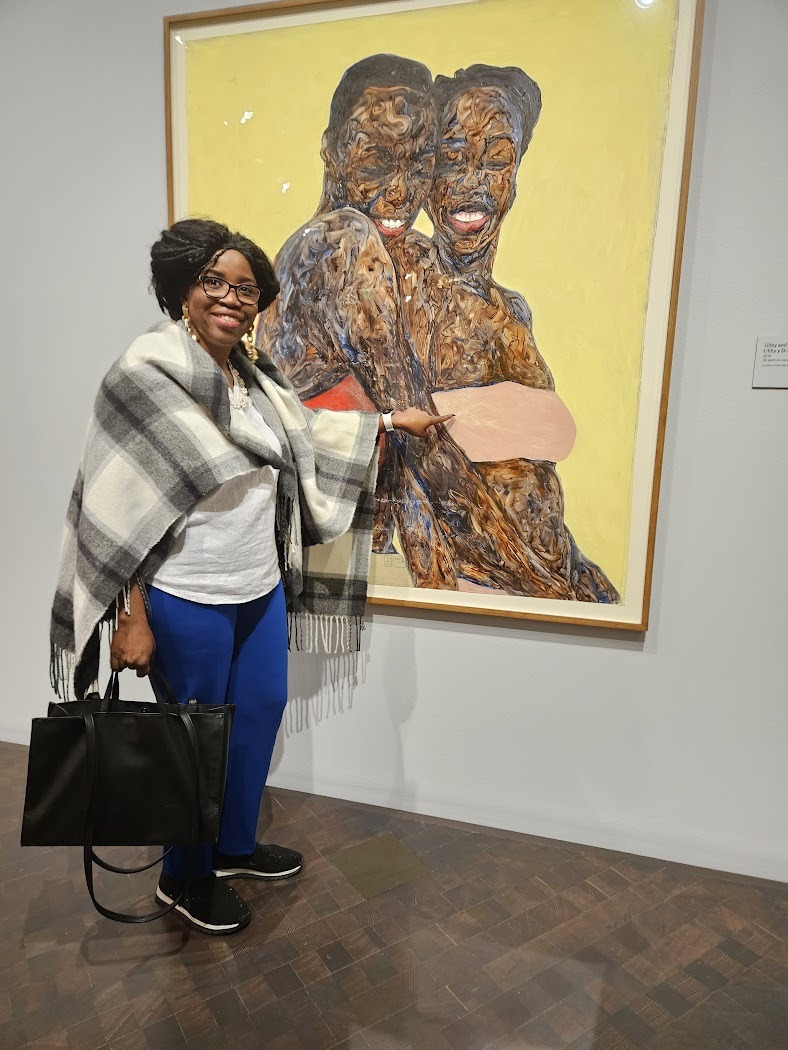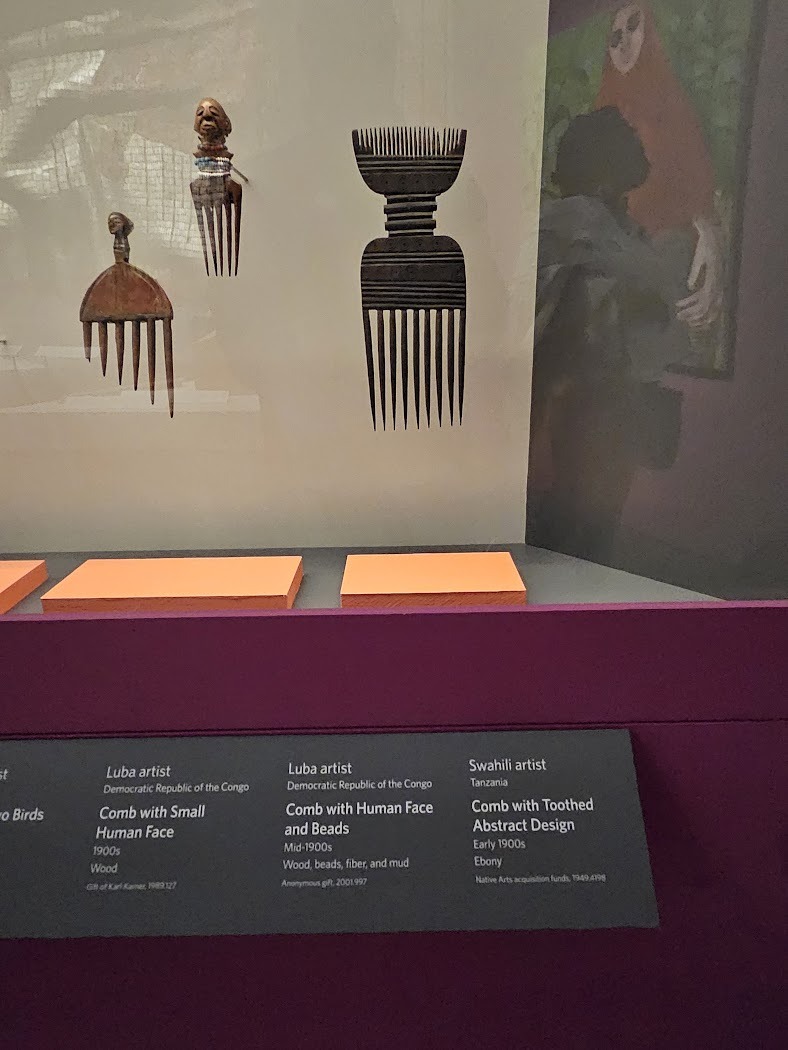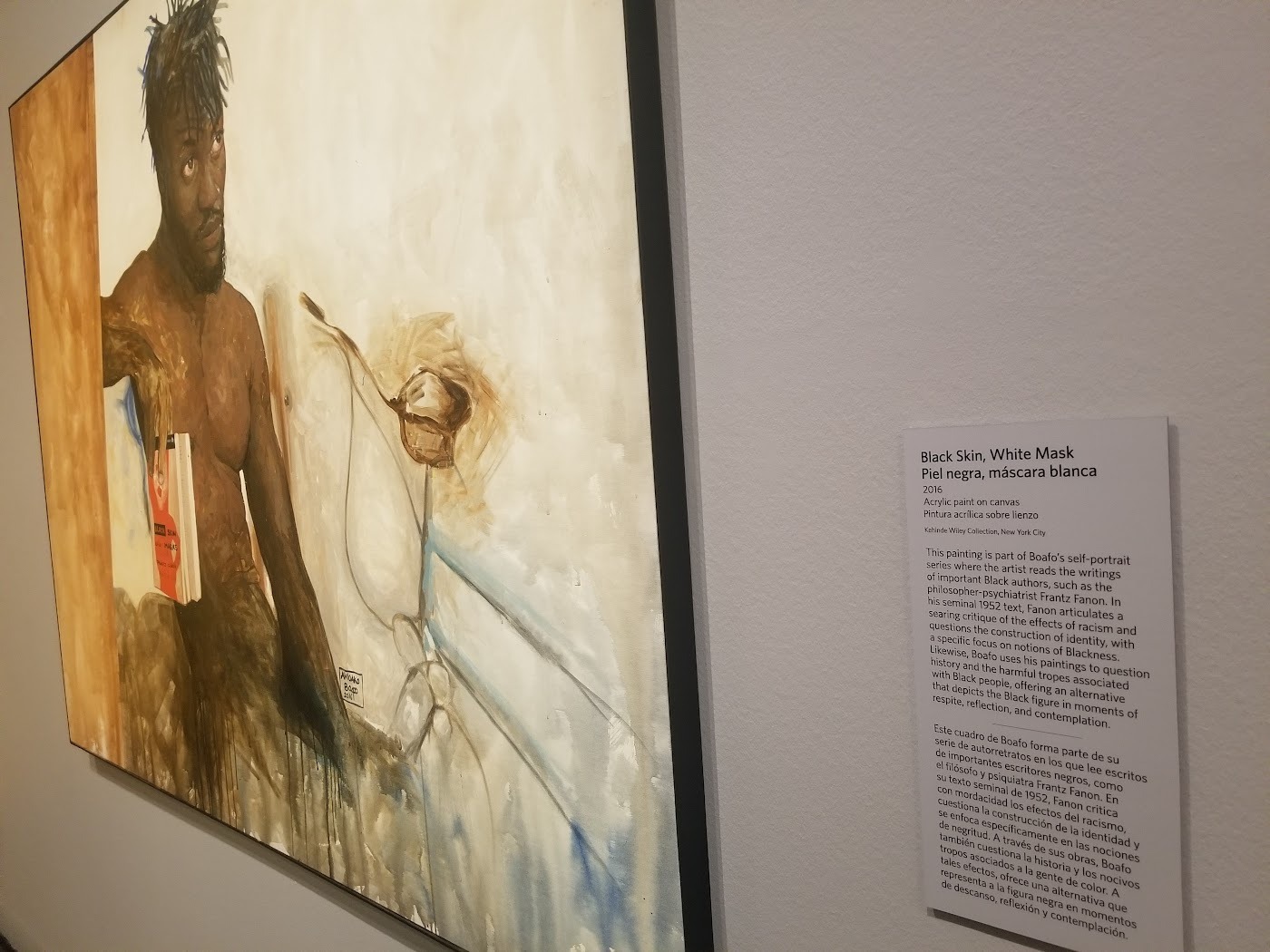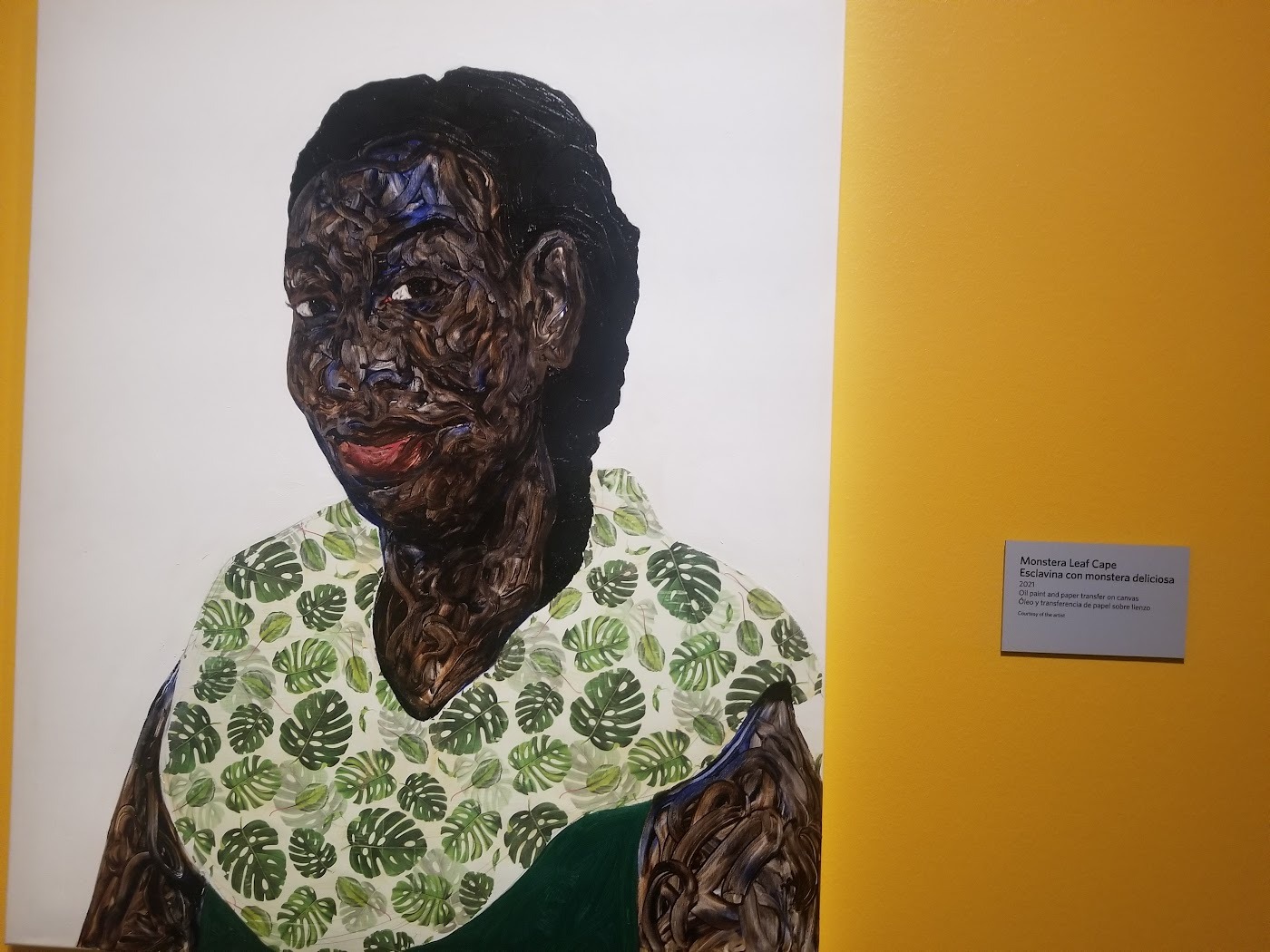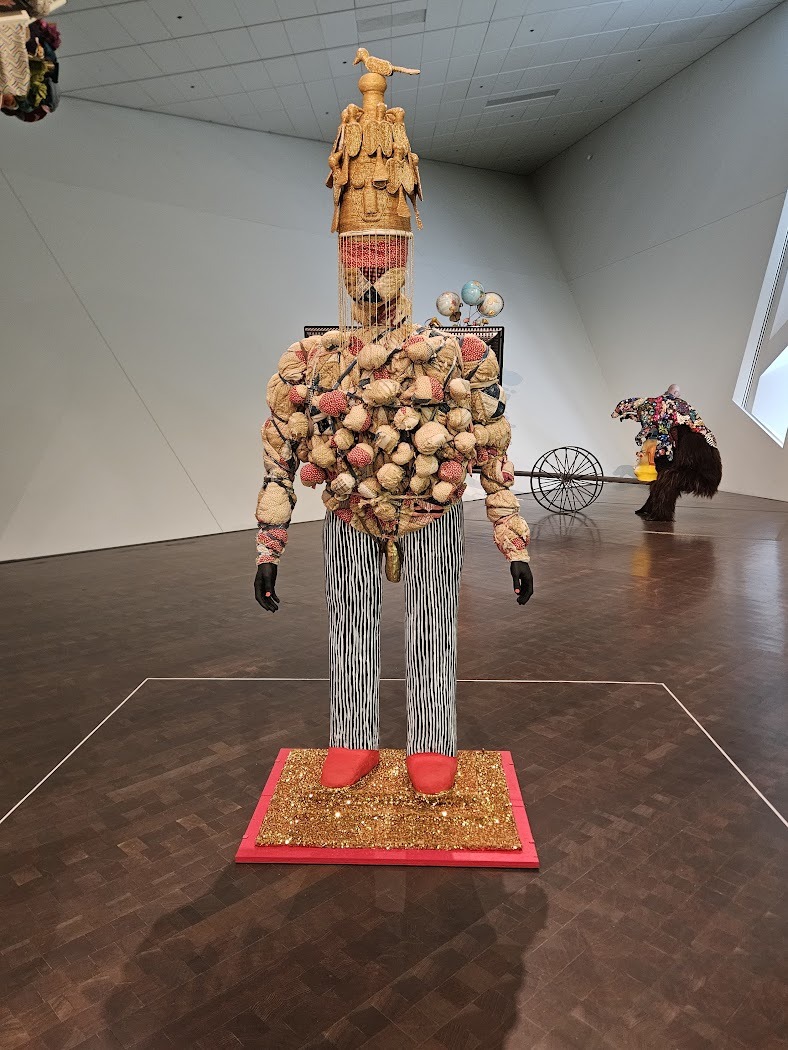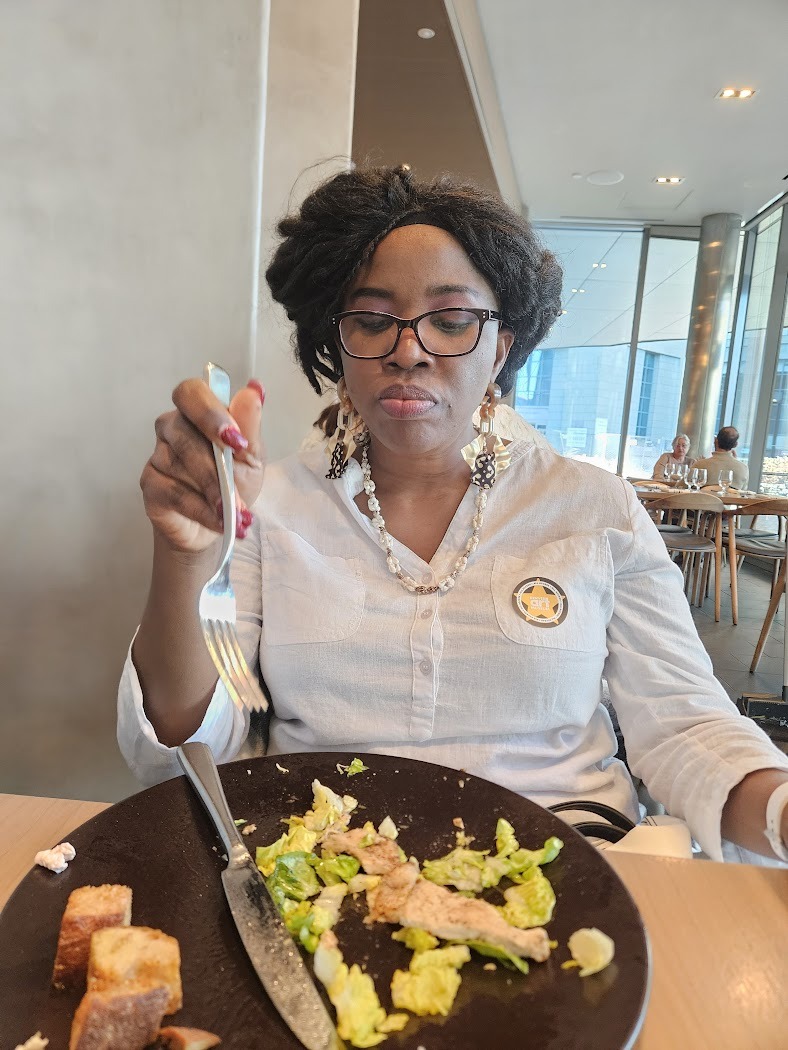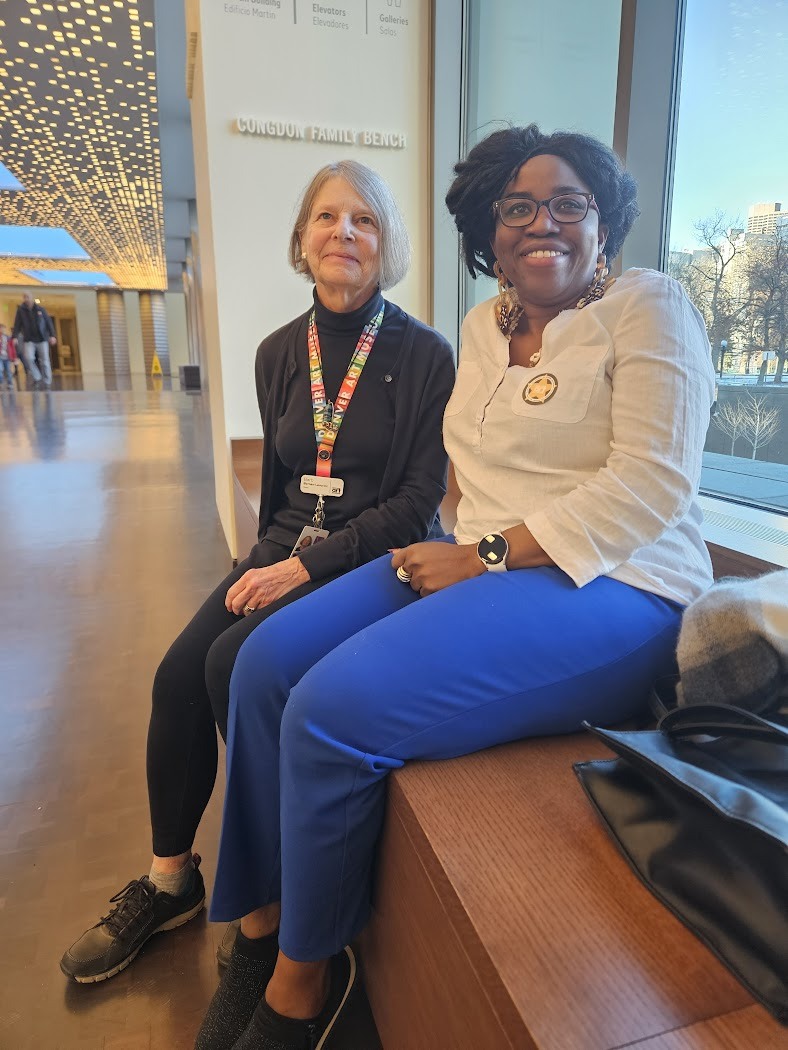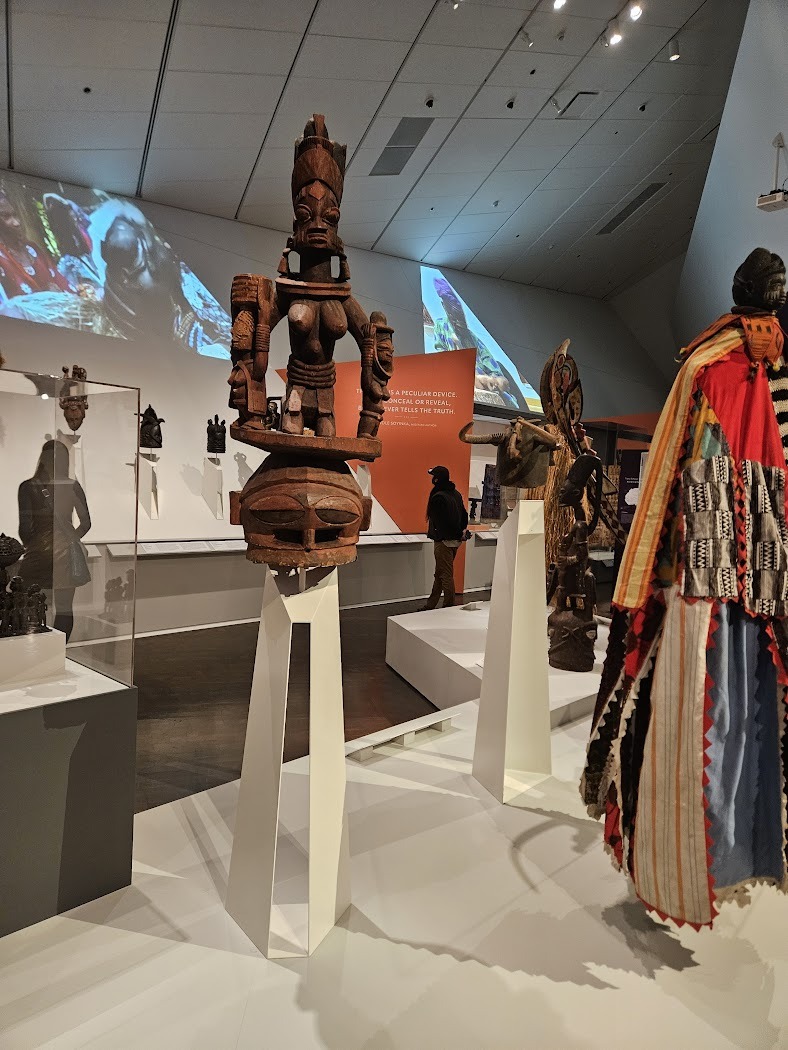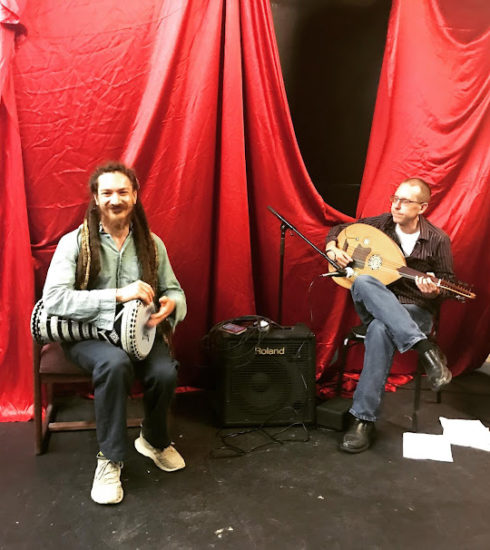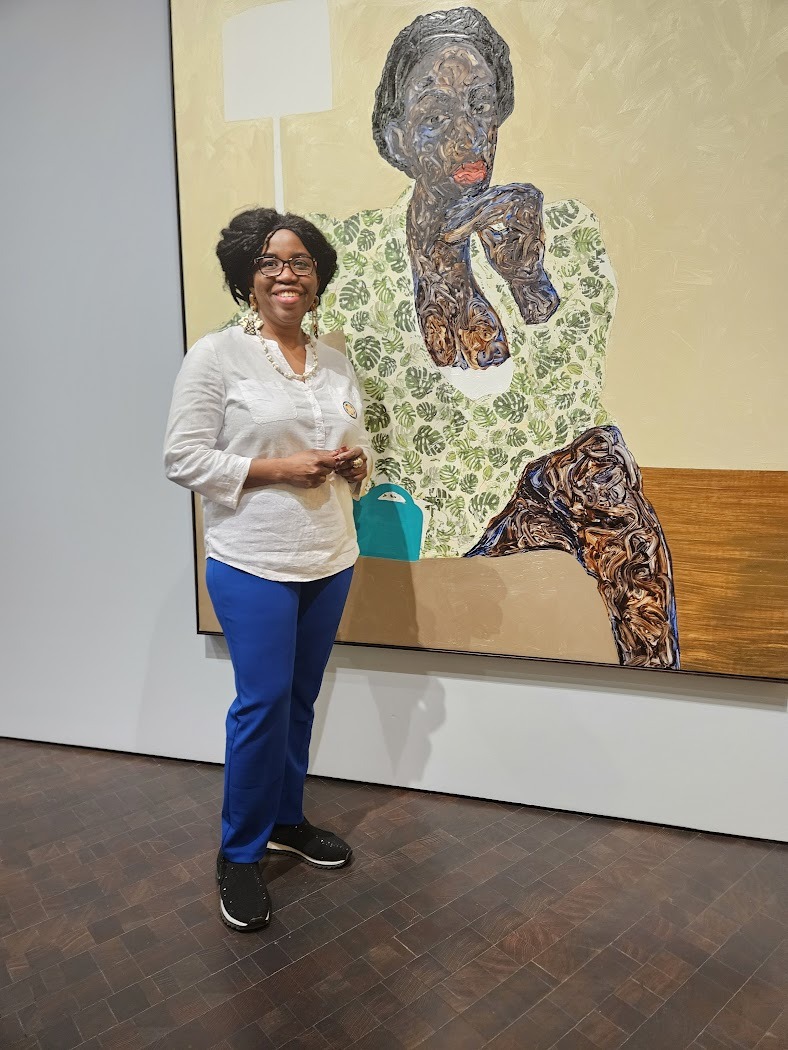
Imagine a vibrant tapestry woven from experiences, aspirations, and a touch of afrobeat. That’s what my visit to the Denver Art Museum felt like, a tapestry I’d been too busy weaving to appreciate. Like many immigrants, my American journey has been one of bootstraps and hustle, chasing the dream with little time for “distractions.” But an invitation to the museum was a hand outstretched to include my community, and I couldn’t ignore it. It was a chance to experience the museum’s splendor and share it with my community, a world often overlooked by the mainstream.
And so, we stepped into the majestic Frederic C. Hamilton Building, a castle of art in the heart of Denver. One exhibit called out to me: “Soul of Black Folks” by Amoako Boafo, promising a vibrant tapestry of Black life. Boafo, a Ghanaian artist, channels his heritage into every stroke. His inspiration? W.E.B. Du Bois’ seminal work, “The Souls of Black Folk.” Boafo’s figures defy limitations, their gazes challenging the “othering” they’ve so often faced.
But the Denver Art Museum wasn’t just about rediscovering Black narratives. The Arts of Africa gallery transported me back home, the smell of Afro Sheen during hair plaiting and the beat of drums washing over me. Carvings whispered ancient stories, masks danced with ancestral spirits, and intricate paintings pulsed with the heartbeat of a continent. It was a homecoming, a reminder of the roots that nourish my own journey.
Leaving the museum, I carried more than just memories. I carried a newfound appreciation for the stories waiting to be discovered, for the beauty that blooms even in unexpected corners. And most importantly, I carried the hope that art, like that fishing line, can cast wider, reeling in communities and weaving them into the vibrant tapestry of our shared humanity.
Amoako Boafo: Where Black Lives Fill the Canvas and Reach for the Sun
Imagine a canvas not just as a rectangle, but as a boundless cosmos. An expanse where towering figures, black and proud, stretch towards the heavens, their very presence claiming space, demanding to be seen. This is the universe of Amoako Boafo, where self-portraits aren’t mere faces, but titans against the backdrop of existence.
He paints with his fingers, not just brushes, each stroke imbued with the tactile memory of life. His figures bleed vibrancy, a kaleidoscope of reds, blues, and ochres pulsating with energy. They’re bold, unashamedly present, challenging the gaze of the “other” with their unflinching eyes and unapologetic posture.
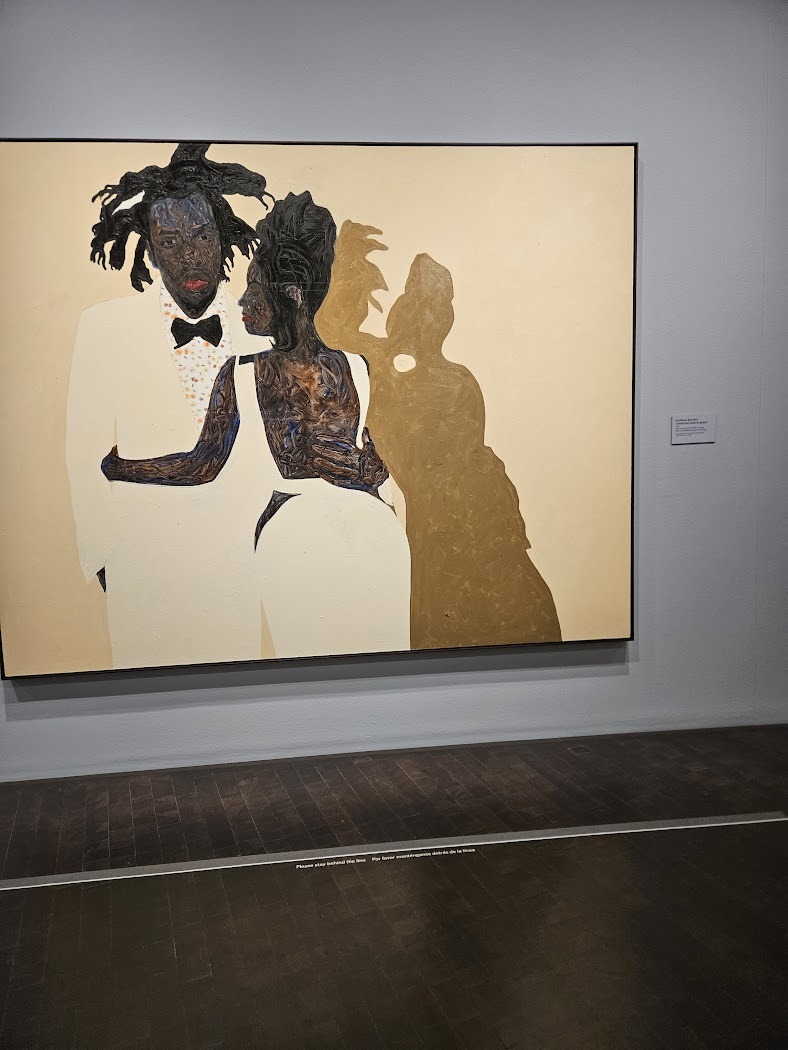
But Boafo’s canvas isn’t just populated by humans. Weaving through the scenes, punctuating the portraits, and climbing alongside the figures are the Monstera Deliciosa leaves. These split-leaf beauties, with their perforated hearts and tenacious spirit, become potent metaphors for the Black experience.
Like the resilient plant, the Black lives in Boafo’s art adapt and overcome. They perforate through adversity, their “splits” not wounds, but testament to their ability to thrive in any environment. They reach for the sun, drawing strength from their roots in culture and community, forever aspiring to climb higher.
This interplay between humanity and nature is a constant dialogue in Boafo’s work. The leaves offer shade, a safe haven within the vastness of the canvas. They whisper stories of lineage, connecting the figures to their ancestral soil. And they offer support, a verdant trellis for souls reaching for the light.
Boafo’s art isn’t just paint on canvas. It’s a symphony of self-affirmation, a celebration of Black existence in all its complexity. It’s a defiant proclamation that Black lives not only belong but occupy, fill, and transform the space they inhabit. And just like the Monstera leaves, they’ll keep perforating, reaching, and climbing, their resilience forever blooming on the canvas of life.
